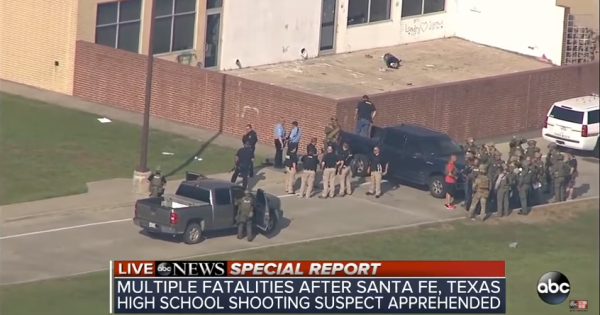
As 2018 draws to a close, a report at Vox.com – citing data from the US Naval Postgraduate School – says this year saw 94 incidents of “school gun violence,” but is the way such incidents are defined creating a false impression of widespread school shootings?
According to Vox, this “project” to track school “gun violence” uses a database that counts “each and every instance a gun is brandished, is fired, or a bullet hits school property for any reason, regardless of the number of victims, time of day, or day of week.” That would mean incidents that really have nothing to do with school operations, students or staff are included.
Everytown for Gun Safety, the gun prohibition lobbying group supported by anti-gun billionaire Michael Bloomberg, also “tracks every time a firearm discharges a live round inside or into a school building or on or onto a school campus or grounds, as documented by the press.”
As noted earlier by Liberty Park Press here, there are some serious issues with the way school shootings are reported and logged, including the revelation that some of those reported incidents apparently never really happened. This perspective takes on added significance thanks to a note in the Vox.com story about the Naval Postgraduate School project that says, “the project also tracks deaths. By this metric, 2018 was also the worst year on record. So far, 55 people, including the shooter, were killed in school gun violence. The second-worst annual death toll was 40 in 1993. (To put these numbers in context, there were nearly 39,000 gun deaths, including homicides and suicides, in the US in 2016.)”
According to the 2016 FBI Uniform Crime Report, 11,004 of the 15,070 homicides that year were committed with firearms. Translation, more than two-thirds of the gun-related deaths that year were not murders, but something else (suicides, accidents, justifiable slayings by police or private citizens). But when combined as deaths from “gun violence,” the larger number invariably creates the impression that the nation is in the midst of a violent bloodbath.
This factual disparity was brought into focus by a Seattle-based midday talk host, Dori Monson, writing for MyNorthwest.com about a self-defense shooting that occurred in February along Interstate 5 near Tacoma. Monson noted that the man who died in that incident has been described by “an anti-gun website” as a victim of so-called “gun violence.” He was fatally shot by a 23-year-old female motorcyclist whom he was apparently trying to beat to death in a road rage incident.
“How utterly ridiculous is that,” Monson asked. “(The attacker) wasn’t ‘lost to gun violence.’ This is a man who nearly pummeled a young woman to death with his bare hands. The reason he died was because Aubrey (Bowlin) was defending herself from him.
“Let me repeat that,” Monson’s narrative continued, “it was not violence, it was self-defense. He was choking her, and she thought he was going to kill her. For anyone to put (the dead man) up as some sort of poster-child for victims of gun violence is unbelievably crazy.”
With Democrats preparing to take control of the U.S. House of Representatives, and having made advances in state legislatures, there is a renewed vigorous push for new gun control efforts. But the question lawmakers must face is whether those efforts are based largely on a misconception created by a numbers game that anti-gunners appear to have mastered.